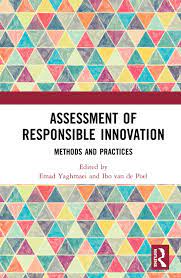
Green Growth Through Technology
I have been following the European Biotechnology Seminar series 2021, an online University run series of 20 minute presentations that take in lots of different aspects of technology.
It’s the second series (here for a review of the first) and really interesting.
Yesterday we got into a discussion about the problems of what we might like to think of as intelligent sustainable growth, the use of technology to reduce emissions and help to improve the health of the planet while also producing economic growth.
The talk was about evaluating sustainability. This is not an easy thing to do in reality, as there are lots of factors that we might like to include, an endless number of factors are really possible, depending on your point of view.
CO2 output, water use, pollution of the land, use of space, just to think about environmental issues. But sustainability also involves social sustainability, and economic. If we close all the factories down then half of the problem will be resolved. But is that socially or economically sustainable?
So we find ourselves having to make decisions about what we are going to address, weight the various aspects of interest and then try to compare one approach with another.
This brought in a discussion about framing the future. Any presentation that we see about addressing climate change today makes proposals, the world will be intelligent, connected and electric. If we frame the future as this, we should understand that we are not only making a proposal, but also excluding other paths. Once electric transport is promoted as the future for transport, others fall by the wayside and what we get is a future of electric transport.
The green growth model (technological solutions) also brings other things into play that are not so broadly discussed: the manufacturing of all of this technology requires raw materials, and a large percentage of those that we use today lie in developing nations.
Lithium Mining
Namibia and Zimbabwe are two of the world’s largest lithium producers today. Chile, China and Australia are the biggest by far in terms of production, the USA for deposits, while the largest mining companies are multinationals, with extraction processes spread across the world. And thanks to its use in batteries this is a growth industry, with current production expected to double by 2024!
The largest project in Zimbabwe appears to be Chinese owned and run (Sinomine), While the largest in Namibia is Canadian.
All of which brings back thoughts of my sociology studies and the start of the mining exploitation by the Belgians and French in Africa. They called in colonialism in those days, taking raw materials from a third country to feed the ruling nation’s economy. The reality also includes polluting other people’s back yards, cheap life and labour.
Any Suggestions?
I am not suggesting that the battery/electric transport future should not go ahead, far from it. Regular readers will have seen lots of my posts about environmentally friendly, energy saving and producing technology, but there are more complications to the model that we like to think about.
Sitting in Europe it is easy to take the technological path without fully working through the consequences for other peoples and global politics. Fed the narrative of doing the right thing for the Earth, always trying to do what is best, but without a full picture of the implications, we (I too) fall into line within the narrative, we drive it and make both the positive and the negative sides real.

